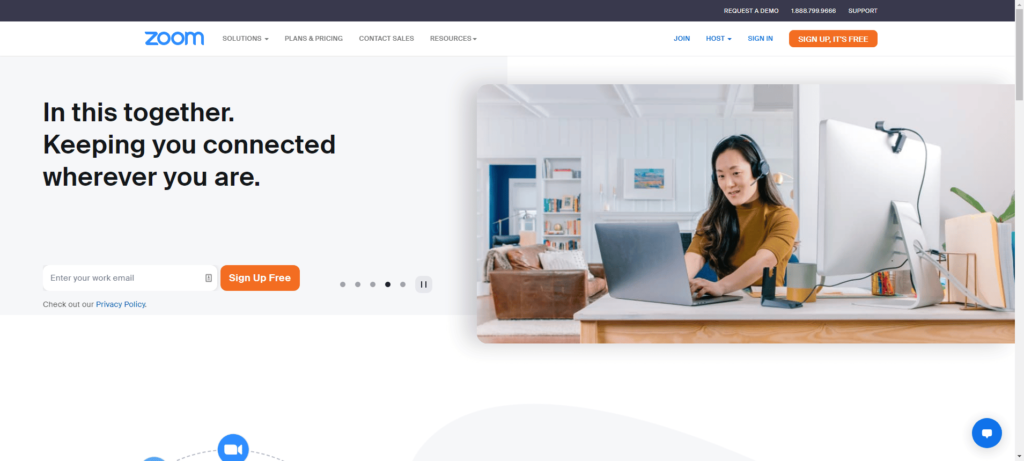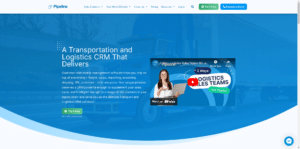Your organization might produce high-performance rainmakers; A-players that outclass the average sales rep. But it’s not enough.
An A-player sales team isn’t enough if your organization doesn’t have the tools and processes it needs to perform consistently. If your sales team isn’t consistently on the same page, your organization won’t achieve the traction it needs to grow.
Your sales team is only as good as your tools
Here’s a scenario.
You have a team of 20 salespeople; 5 of these salespeople generate 80% of your sales, but they do it in a way that makes things more difficult for the sales team and the organization as a whole.
- One sales rep gives customers unauthorized discounts. He brings in a lot of business, but profits from his sales are very low. The company is losing money, breaking even, or just barely in the black. As a result, these customers expect significant (and unprofitable) discounts whenever they buy.
- Another sales rep promises new features. She’s a people pleaser; she wants her customers to feel the company is going out of its way to deliver. This stresses out the engineering teams, and the company often fails to deliver on its promises.
- Two of these sales reps refuse to give up control over the customers they bring in. They act as gatekeepers controlling who contacts “their customers” and when. As a result, customers are loyal to these sales reps rather than the company, even though the company is responsible for providing the products and services. These sales reps use their large customer database as leverage over the company, always implying they’ll leave if they don’t get what they want.
- One of your sales reps, the king of upsells, burns customers out with offers. When it comes to upsells, he’s a magician. He pushes products hard, extracting significant revenue in the short term. The downside? He kills CLTV in the long term. His CLTV is 83% lower than the team average. He’s closing deals in the short term but pushing customers away in the long term.
This is just with the top five salespeople on your sales team.
What about the other 15 sales reps?
- They don’t ask for the sale because they don’t want to scare prospects away
- If you ask about a prospect’s position in the sales funnel, they’re not sure how to answer
- These sales reps waste time with prospects who are unable or unwilling to buy
- They’re not sure how to manage key to-dos in the sales pipeline
- These sales reps don’t know how to answer a prospect’s fears, objections, or risks
- Sales reps don’t know how to use questions to identify a prospect’s place in the buyer’s journey
- When it comes to selling, they’re lopsided; they struggle with selling or prospecting
- Overpromising and over-delivering is also a problem due to desperation
- These sales reps struggle with productivity, and performance issues are constant problems for them
- Disqualification is a continuous struggle for them due to desperation, fear of losing their jobs, fear of failure, etc.
Here’s why this is a problem.
Research from MarketingSherpa shows that salespeople lose 80% of their sales revenue.
How’s that possible?
Well, salespeople ignore the vast majority of their long-term leads. These are leads that require nurturing to generate revenue. That’s not all that appealing to salespeople as they’re looking to earn a sales commission right now, in the present.
Why you need a strong sales funnel
The word “sales funnel” is not synonymous with “sales pipeline,” so we need to define our terms.
- Sales pipeline: Your pipeline refers to the steps salespeople take in the sales process — prospecting, request for information, pitch, negotiation, decision, etc. The stages in your pipeline vary depending on your industry, but the focus is the same. Your sales pipeline is a micro-level process that guides sellers through the buyer’s journey.
- Sales funnel: This describes the steps taken by the customer on their end as they move through the buyer’s journey (e.g., awareness, desire, research, and decision). This is a macro-level process that describes the steps your prospects take as they work towards a buying decision.
What are the specific stages of a sales funnel?
- Awareness: Prospects become aware of the problem and the consequences of the problem
- Interest: Prospects realize they have a need, and they’re looking for a solution
- Evaluation: Prospects evaluate their offers and comparison shop
- Negotiation: Prospects work to identify the terms that are best for their needs
- Decision to buy (or not)
Here’s the thing about your sales funnel.
There’s a right and wrong way to approach each stage of the funnel. Let’s take a look at the negotiation stage, for example. Prospects can approach the negotiation stage as (1.) a penny-pinching customer looking for a lowball offer or (2.) a value-conscious customer looking for a trusted advisor.
This is the part that’s frequently ignored.
Well then.
What will you need to build a strong sales funnel and enforce the standards and requirements? Let’s take a look.
The tools top-performing teams use to build strong sales funnels
Your tools should mirror your sales funnel.
The easier it is for you to guide customers through the steps in the sales funnel, the more likely you are to win deals and close sales. With that in mind, let’s look at the tools top performers use to build a strong sales funnel.
1. Awareness
Personalization is appealing to most customers. Research from Epsilon Marketing shows that 90% of customers find personalization somewhat or very appealing; 80% are more likely to work with brands that offer personalized experiences.
You need data enrichment for that.
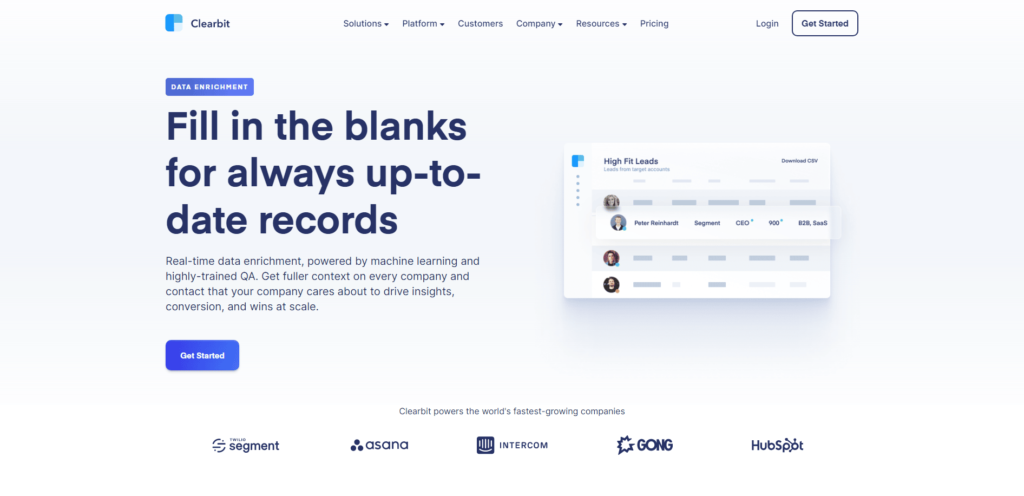
Clearbit: uses machine learning to fill in the blanks in your Rolodex, ensuring that you always have up-to-date records for each company and contact in your pipeline. This is helpful because it ensures you have the data you need to personalize your pitch for each company and contact.
Price: Request a quote
…
Why you need it
Your leads aren’t always accurate. Some of the prospects (who approach your sales team) use burner phones and fake email addresses. Clearbit provides the data you need to address errors, misspellings, and intentionally falsified data.
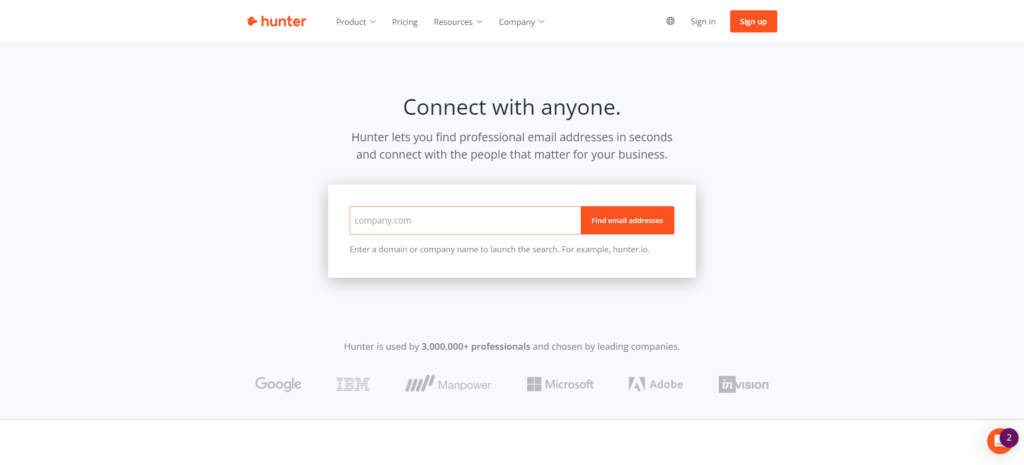
Hunter: This is an email verification tool that allows you to find professional email addresses in seconds, enabling you to connect with decision-makers, influencers, and gatekeepers in a variety of professional settings. Hunter is especially helpful if you need to find and validate email addresses for a large list.
Price: $0 – $399
…
Why you need it
It’s important that you spend your time focused on the right people. The more time you spend in front of customers, the easier it is for you to close the sale. If you’re wasting your time with tire-kickers who choose to give you a fake email address, you’ll need to know that sooner rather than later. If you’re dealing with an eager prospect, it’s also good to find out ahead of time.
2. Interest
At this stage, prospects realize they have a problem they need to solve, and they’re open to a solution. Showing prospects that you understand the dimensions of their problem is an easy way to increase their interest.
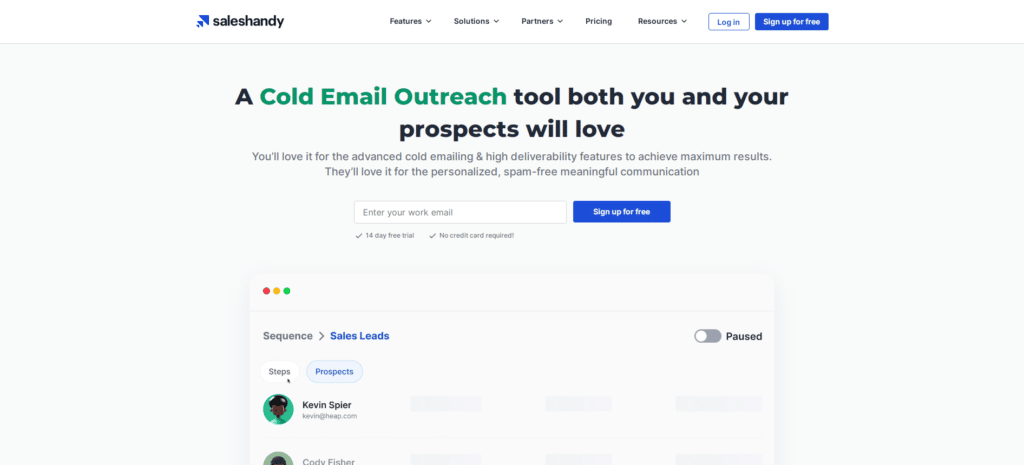
Saleshandy: Automated cold email outreach and follow-ups that allow you to schedule multi-stage sequences in advance. Use your personal email address with this outreach platform; track opens and clicks for each of your emails.
Price: $9 – $33 per month.
…
Why you need it
Consistent follow-up is the key to sales success. In my previous post I shared a sobering statistic. Only 3% of your prospects are active buyers; this means 97% of the prospects you engage with aren’t buyers. This means follow-up is an essential part of the sales process that sales reps need.
What about sales reps?
IRC Sales Solutions found that “When emails or phone calls are ignored, 44% of salespeople give up after just 1 attempt, and only 8% of salespeople follow-up more than 5 times.”
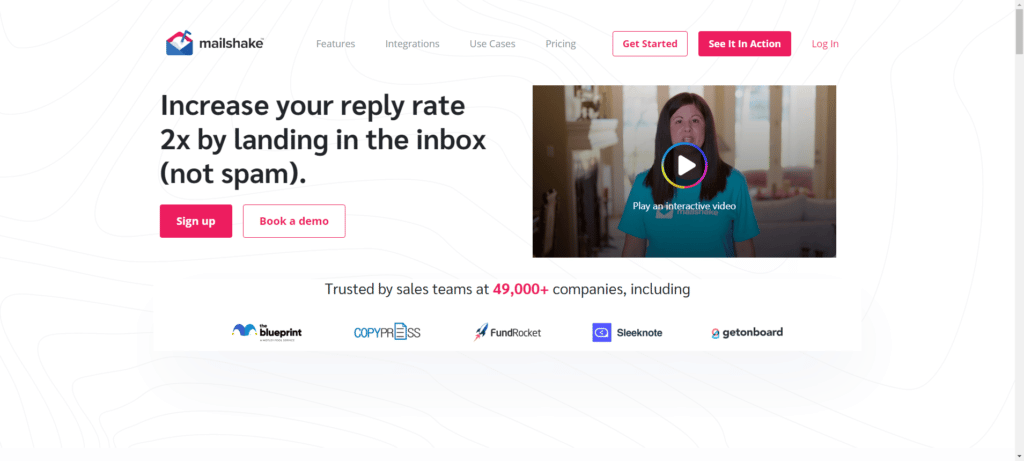
Mailshake: An email automation tool that claims to “increase your reply rate 2x by landing in the inbox (not spam).” It’s a straightforward tool you can use to facilitate outreach in a few minutes. Use this tool to pitch thousands of prospects all at once with email outreach campaigns and automated follow-ups.
Price: $58 per user/month. – $85 per user/month.
…
Why you need it
Mailshake is a true triple threat – use it to automate cold pitches via phone, email, and social media. This tool integrates with your CRM system, automatically importing the contacts you have in your sales and marketing platforms.
3. Evaluation
During the evaluation stage, prospects are weighing up their options. They’re comparing you against your competitors, and they’re listening to your answers to their objections and concerns. This is the time to provide them with the education, information, and materials they need to make a decision.
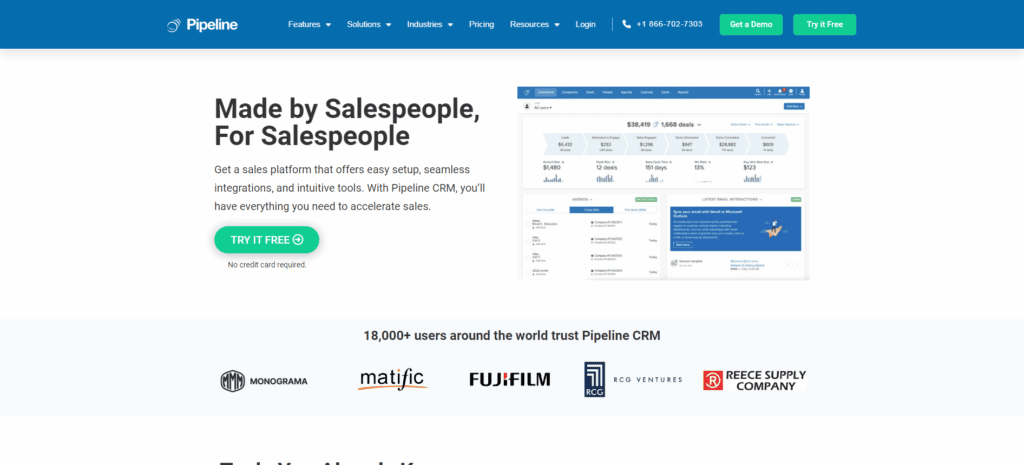
PipelineCRM: A sales CRM platform that’s designed by salespeople for salespeople. Most CRMs focus on evaluation or analysis, but they fail to increase sales. Pipeline is oriented around the sales process. It’s not designed for managers, directors, or executives. It’s built to help salespeople do one thing, close.
Price: $25 – $59 per month.
…
Why you need it
If you’re selling, you need a sales platform that allows you to monitor (a.) revenue leaks due to poor quality or mismanaged leads, (b.) productivity to enforce performance standards, (c.) sales funnel and pipeline activity to help you shepherd customers through the sales process, (d.) sales forecasts and income projections.
Zoom: is video conferencing and meeting software. Face-to-face meetings give prospects the tools they need to evaluate brands. Brands can quickly build rapport with prospects, closing deals faster.
Price: $0 – $19 per month/user
…
Why you need it
Research shows that face-to-face communication enhances trust and conversion rates. Face-to-face communication is an easy way to build rapport, disqualify prospects, and close sales. The social norms, body language and gesture clusters – all of the things we can see teach us about the areas we can’t see.
4. Negotiation
Smooth negotiations are rare. The more people involved in the negotiation process (e.g., accountants, lawyers, executives, technical consultants, etc.), the more likely you’ll have to make some changes.
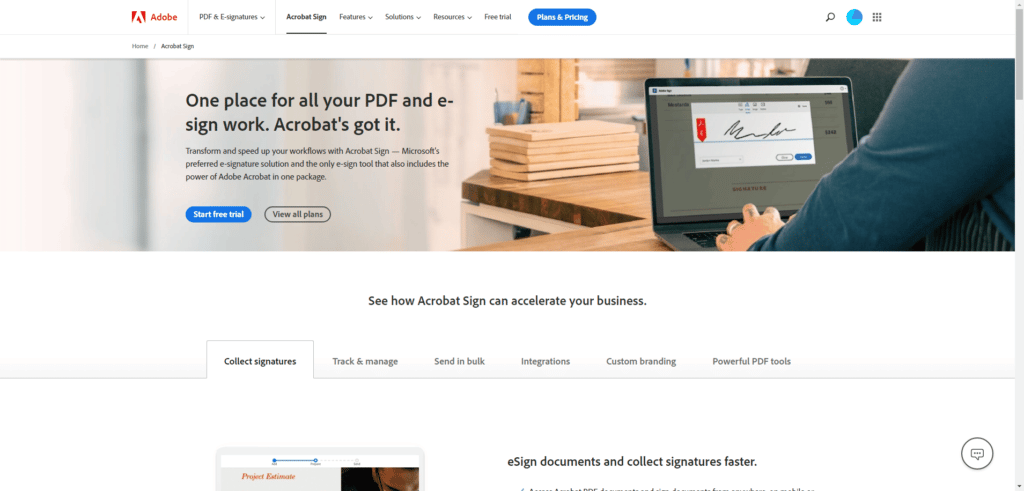
Adobe Sign: This is an e-sign product that enables sellers to send, sign, track, and manage signatures and contracts using a browser or mobile device. Most of us are familiar with e-signing documents; Adobe Sign is a straightforward way to manage the negotiation process.
Price: $12.99 – $19.99 per month. (annual contract)
…
Why you need it
If you’re managing a B2B sales team, you’re going to need to get a signature to close the sale. Believe it or not, there are still sales teams that send contracts out (as attachments) via email, or ship their agreements via snail mail. There’s a time and place for that but for most industries, it’s no longer a requirement.
With Adobe Sign you can negotiate with prospects and send agreements (as well as changes) to all of the people involved in the deal.
The problems with building a sales funnel
When it comes to building a sales funnel, there are a few problems sales teams run into consistently.
Let’s start with the foundation.
If your sales funnel treats each prospect the same, you’re spending time with the wrong customers, guaranteed. Remember the 3% rule; only 3% of your prospects are active buyers. 97% of your employees
- Not enough friction: Your sales funnel needs barriers for prospects to overcome. Prospects should be willing to (a.) share their name + contact info (b.) answer questions so you can help them (c.) tell you the truth about their circumstances, etc. illegitimate prospects aren’t going to want to jump through these barriers because it exposes them as illegitimate!
- No disqualification: 97% of your prospects aren’t ready to buy right now. These prospects need to be disqualified and then segmented. Are they willing to buy later? Follow-up. Do they hate your company? Drop them. Are they predatory customers? Blacklist them. Sell to the 3% who are ready to buy now. Nurture the 37% who will have a need. Monitor and periodically ping the 30% who do not yet have a need.
- Not enough leads: Fill your funnel, keep it filled with prospects. Focus on the lead sources that produce results, drop the lead sources that fail to produce results.
- No checkpoints: These checkpoints expose your prospects’ position, enabling you to disqualify them with confidence. For example, let’s say your prospect requests a proposal from you. You bring them to a checkpoint where they’re forced to make a decision. “Mr. Prospect, let’s say I deliver the perfect pitch (or proposal). Let’s say I’m able to answer all of your questions, concerns and objections. Let’s also say the price is perfect. What will you do next?” There’s only one right answer. They’re going to sign the contract. Any other answer means you’re dealing with a waffler. You’re wasting your time if you write that proposal.
Tools help you enforce these boundaries.
You can add these requirements to your CRM system, your email platform, or tool of choice.
Use these tools to build a strong sales funnel
An A-player sales team isn’t enough if your organization doesn’t have the tools and processes it needs to perform consistently. If you want the traction you need to grow you’ll need the right tools.
An all-star sales team isn’t enough.
Want to increase your revenue consistently over time? Integrate the right people, products, and processes in your organization. Harmonize these three elements and you’ll find you’re able to create all-star rainmakers; boost your company’s traffic, visibility, and revenue, consistently.
Remember, there’s a right and wrong way to approach each stage of the funnel. Create the right structure for your sales funnel and you’ll find you’re able to close more deals successfully.
Boost Sales Revenue by 15 - 50%
PipelineCRM helps 18,000+ companies like yours decrease time-to-close, increase productivity by 50% or more, and 10x sales. Let us show you how Pipeline can help you win more customers and deals.

